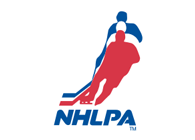
The reaction from the players to the NHL owners recent proposal came today. It was not good. The details of the proposal were somewhat ignored. The NHLPA countered with a three-option proposal system. They did not take the owners proposal and counter on each topic. Instead they developed a three-option system to propose to the owners. After a one hour meeting on Thursday afternoon the owners left the meeting stating that the players did not address the current proposal, and that the two sides are not even on the same page. After great optimism yesterday, all of it was dashed today. The scary part of this situation is that there is no current negotiations scheduled, and time is starting to run out. The two sides must find some kind of common ground, and address these key core issues. Below is a short summary of the three-option counter proposal, and my reaction to the proposal. Proposal breakdown thanks to cbc.ca.
Option 1 – Fixed Shares
-
Fixed dollar amounts in years 1-3, taking share to under 51 per cent at the end of three years if hockey-related revenues (HRR) grows at its historical average (7.2 per cent).
-
In years four and five, NHLPA would accept 50 per cent of HRR as long as players’ share wouldn’t fall below the third year’s level.
-
If HRR grows faster than the 5 per cent Bettman has said the NHLPA receives an extra increment, but share would still be based on 50 per cent.
-
Player concessions total $800-million if HRR grows at 5 per cent a year, $1.1-billion if HRR grows at the historical rate (7.2 per cent) of the past ten years.IEHN – ASSUMES WAY TO MUCH GROWTH FOR THE OWNERS LIKING. DOES NOT GET TO THE 50/50 QUICK ENOUGH.
Option 2 – Milestones
-
The faster revenues grow, the faster players’ share goes to 50 per cent, and more money NHL saves.
-
If league revenues grow at 5 per cent per year, players’ share will equal 50 per cent in year five. To get there, players’ share equals $1.883-billion (same level as last year), plus 24.7 percent of any new HRR, allowing share time to fall to 50 percent.
-
Once HRR crosses $4.216-billion level, players’ share is equal to 50 percent of level suggested by 5 percent annual growth rate and 57 percent of any increment to HRR above the 5 percent annual growth rate up to 7.2 percent; and 61 percent of HRR increment over 7.2 percent annual growth rate level.
- Player concessions total $854-million if HRR grows at 5 percent a year, $1.059-billion if HRR grows at the historical rate (7.2%) of the past 10 years.
Option 3 – Make Whole
-
Takes the players’ share to 50/50 immediately.
-
Contracts that were signed before the lockout are valued for both share and cap purposes at 87 per cent of the contract’s cash and cap value in any year these deals are in force. This is because the 50 per cent, once benefits are accounted for, represents a 13 per cent cut in total player pay. This 13 per cent does not count towards share or club salary cap.
-
This is done to protect players who signed long-term deals.
-
It says that players will accept 50 per cent for new contracts, but the owners must live by their word for past agreements.
-
Over time, these older deals will wind down. By year 5 the majority of the current contracts will be out of the system and the share will reach 50 per cent.
-
The owners would be assured of $750-million in savings.IEHN – THIS OPTION MAY BE THE ONE THAT GETS THE OWNERS TALKING. I ACTUALLY LIKE THIS ONE. THE 50/50 RIGHT AWAY IS WHAT THE OWNERS WANT. CONTRACTS THAT WERE SIGNED PRIOR TO THE LOCKOUT SHOULD BE HONORED. THE OWNERS SIGNED THESE IN GOOD FAITH AND SHOULD HAVE TO HONOR THEM. THE DESCRIPTION ON HOW TO HANDLE THE CAP MAKES SENSE.This lockout has gone on long enough. I have been very disappointed in how the NHLPA has handled the negotiations. I do like option three in the NHLPA proposal. I think that with some tweaking it could work for both sides. Lets hope that the two sides get together very soon, and get this lockout solved. The owners rejected these proposals, and no negotiations are scheduled. Looks like things are going to get worse before they get better.

Brad Burud the owner/editor of the Inside Edge Hockey News. I am a huge fan of hockey, from youth hockey, to junior hockey, and of course professional hockey. I have played, coached, worked as statistician, and watched hockey all of my life. Hockey is not just a game, it is a lifestyle and family. The game of hockey is great! It can bring you nights of great enjoyment. It also brings nights where you feel like your team will never win. I am proud to be a journalist for the greatest game in the world. I have a degree in Business Administration, Psychology from Minot State University. I also have a Hockey General Manager and Scouting, and Sports Communications/Journalism degree from Sports Management Worldwide. I am also a member of the Sports Executives Association. Most of all I am a fan. Hockey is a huge part of my life and my families life.
